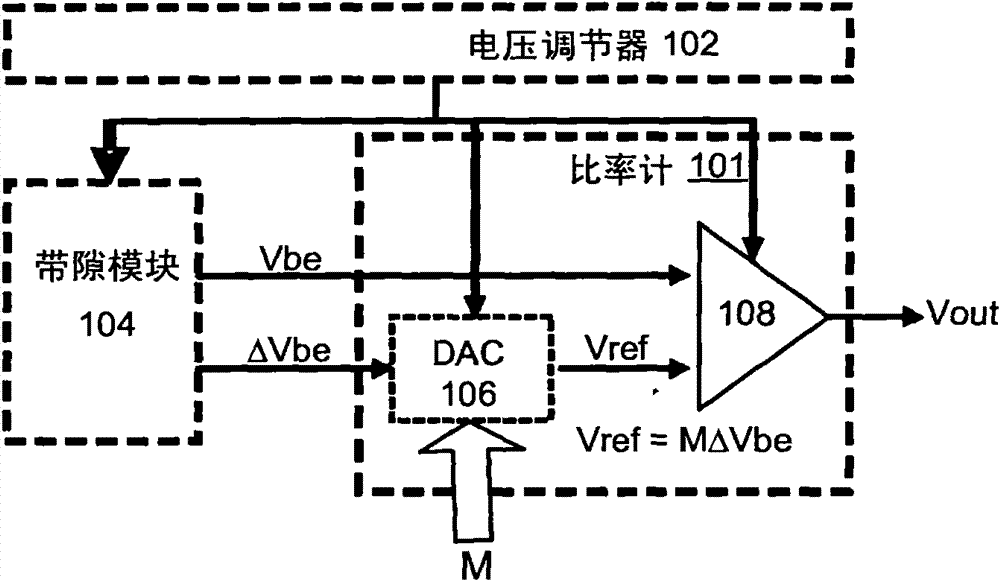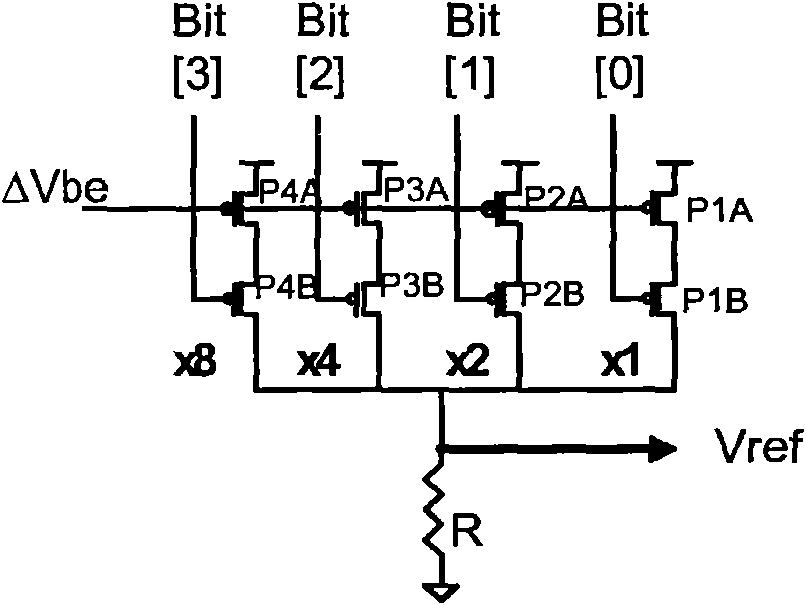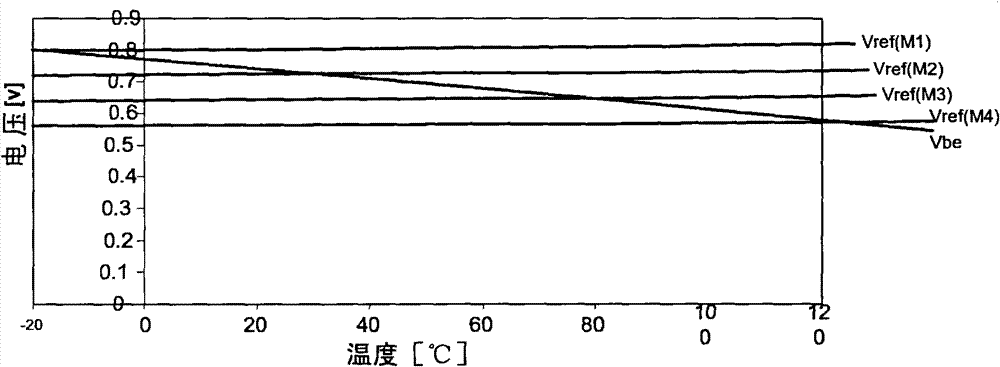Ratio meter for temperature sensor
A ratio and frequency technology, applied in the field of ratiometers for temperature sensors, can solve problems such as temperature errors, increased area and power consumption, and increased measurement errors
- Summary
- Abstract
- Description
- Claims
- Application Information
AI Technical Summary
Problems solved by technology
Method used
Image
Examples
Embodiment Construction
[0017] In some embodiments, a new DTS implementation is provided that can employ the existing Vbe / ΔVbe temperature correlation principle, but replace the DAC-based ratiometer with a voltage-frequency (V / F)-based ratiometer. This new approach can lead to a more simplified circuit that is more tolerant to variation and can require less power and area.
[0018] Figure 4 A schematic diagram of a DTS according to some embodiments is shown. The DTS includes a ratiometer 401 with a voltage-to-frequency (V / F) converter (or oscillator) 404 (V / F1), 406 (V / F2) and a frequency divider ( F1 / F2) 408, the ratiometer 401 is coupled to the existing bandgap circuit 104 as shown to provide a temperature factor M whose value corresponds to the temperature in the bandgap circuit. Bandgap circuit 104 includes a diode-based PTAT module that generates two temperature-dependent DC voltages, Vbe and ΔVbe. In some bandgap circuits, ΔVbe may sometimes be referred to as Vref, etc. (See, e.g., "A CMOS ...
PUM
 Login to view more
Login to view more Abstract
Description
Claims
Application Information
 Login to view more
Login to view more - R&D Engineer
- R&D Manager
- IP Professional
- Industry Leading Data Capabilities
- Powerful AI technology
- Patent DNA Extraction
Browse by: Latest US Patents, China's latest patents, Technical Efficacy Thesaurus, Application Domain, Technology Topic.
© 2024 PatSnap. All rights reserved.Legal|Privacy policy|Modern Slavery Act Transparency Statement|Sitemap



